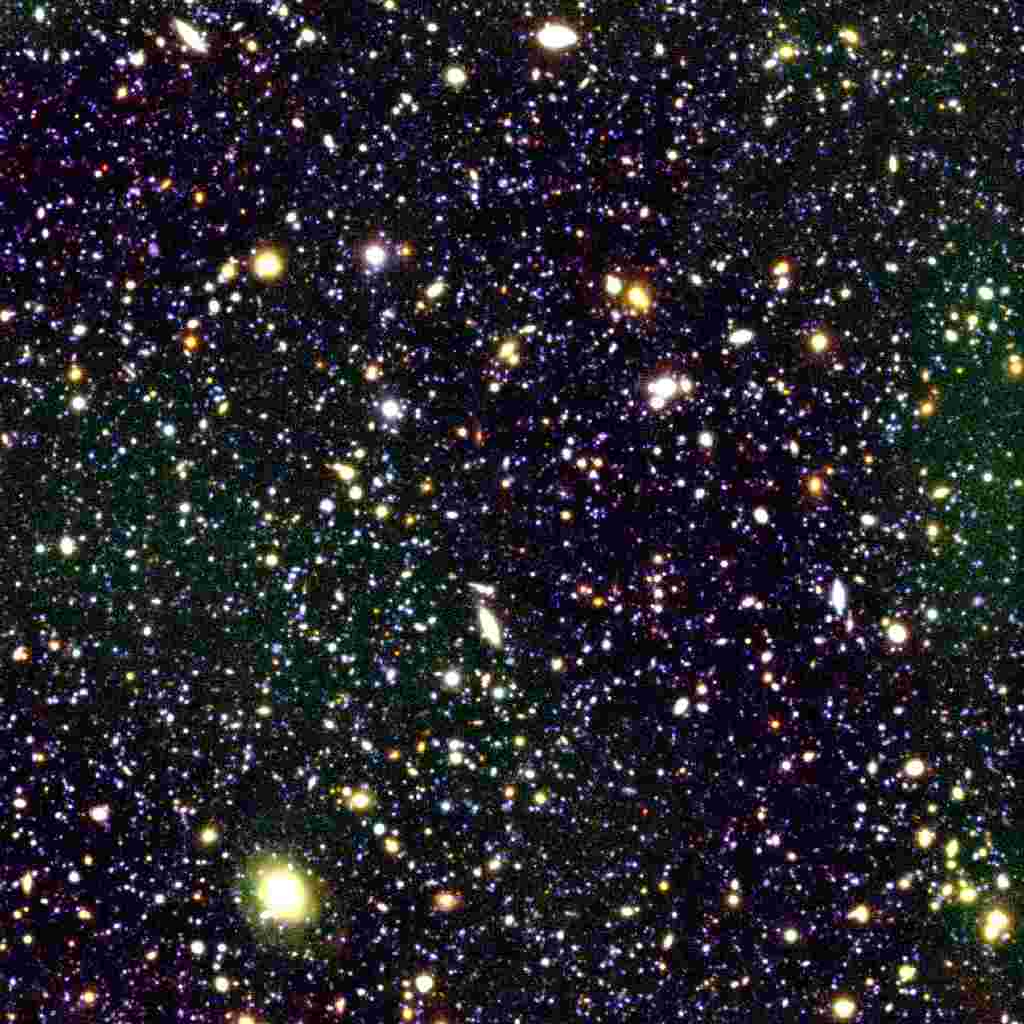
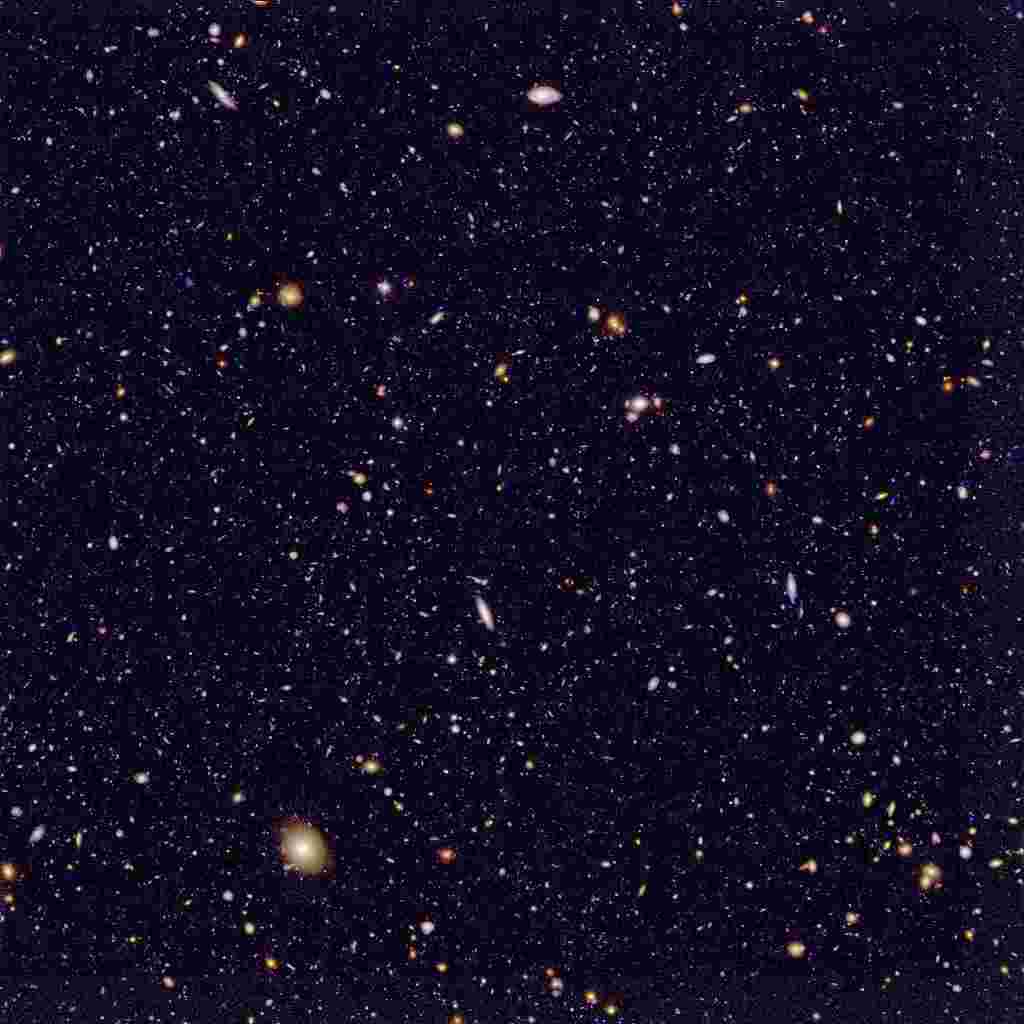
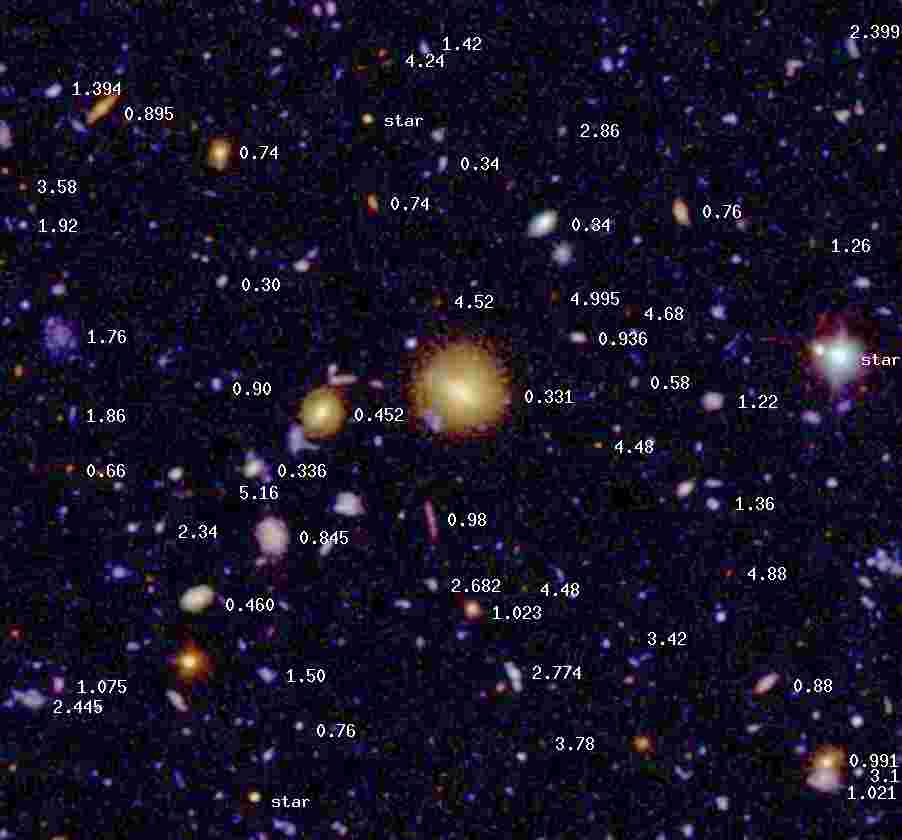

|

|

|
| BRI composite image of the FORS Deep Field. FOV is 6' on each side. See Heidt et al. 2003 | BRI composite image of the FORS Deep Field. The image has been processed with the Lucy deconvolution to increase the resolution to about 0.4" and to make fainter features visible. See Appenzeller et al. 2004 | The appearance of FORS Deep Field galaxies at different redshift. Observed redshifts are indicated by numbers placed to the right of the corresponding object. Three decimals indicate spectroscopic, two decimals photometric redshifts. The image covers about 90" by 80". See Appenzeller et al. 2004 |
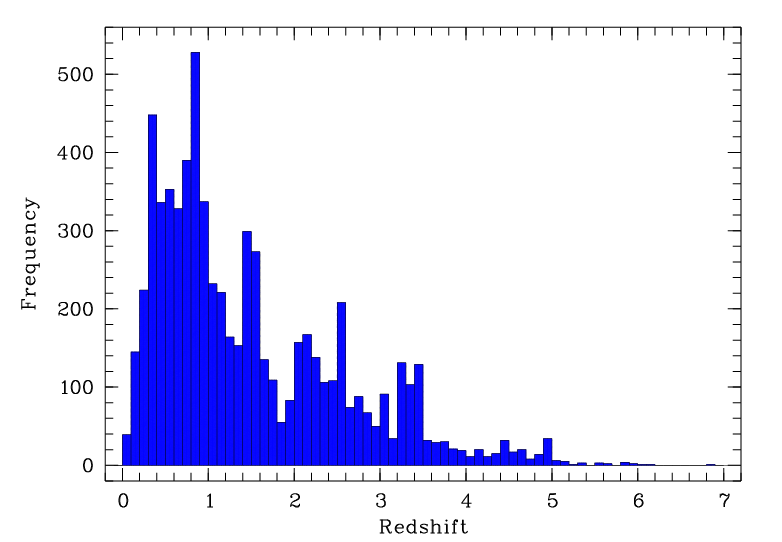
|
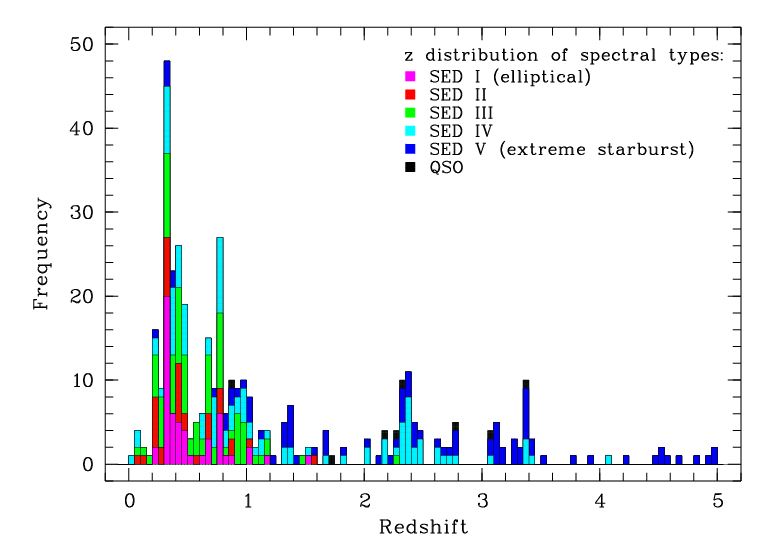
|
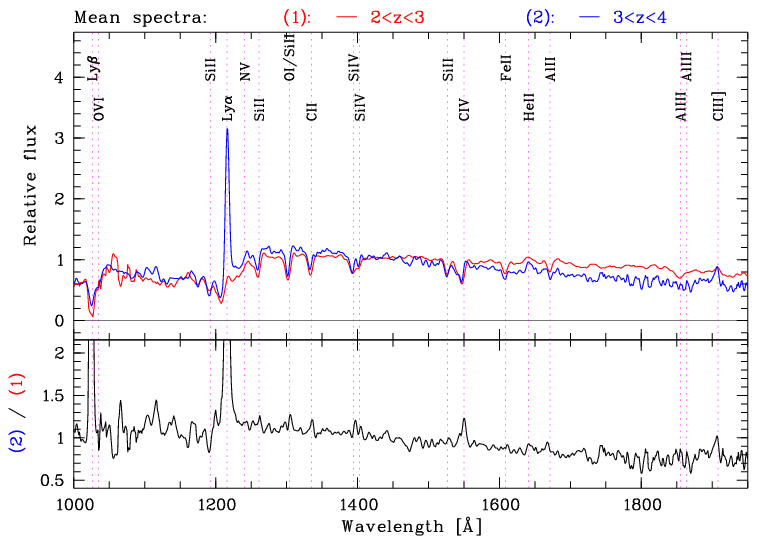
|
| The distribution of the photometric redshifts in the FORS Deep Field. The ordinate gives the number of galaxies observed within redshift intervals of 0.1. See Appenzeller et al. 2004 | The distribution of well measured spectroscopic redshifts in the FORS Deep Field. The ordinate gives the number of galaxies per redshift interval of 0.05. The colours differentiate galaxies with different levels of star formation activity, ranging from insignificant star formation (magenta) to extreme starburts (dark blue). See Noll et al. 2004 | Comparison of the mean spectra of FORS Deep Field starburst galaxies with redshifts 2 < z < 3 (red solid line) and 3 < z < 4 (blue solid line). The spectra are normalized to have the same flux level at the (rest frame) wavelength 1425 Å. The lower panel shows the ratio between the two spectra. See Noll et al. 2004 |
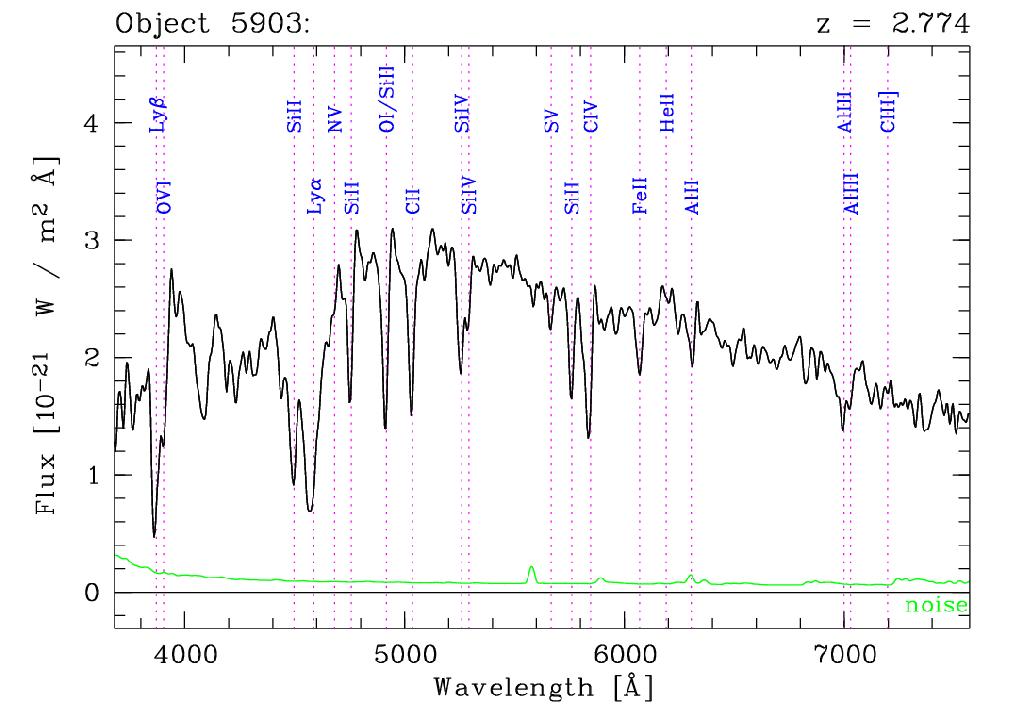
|
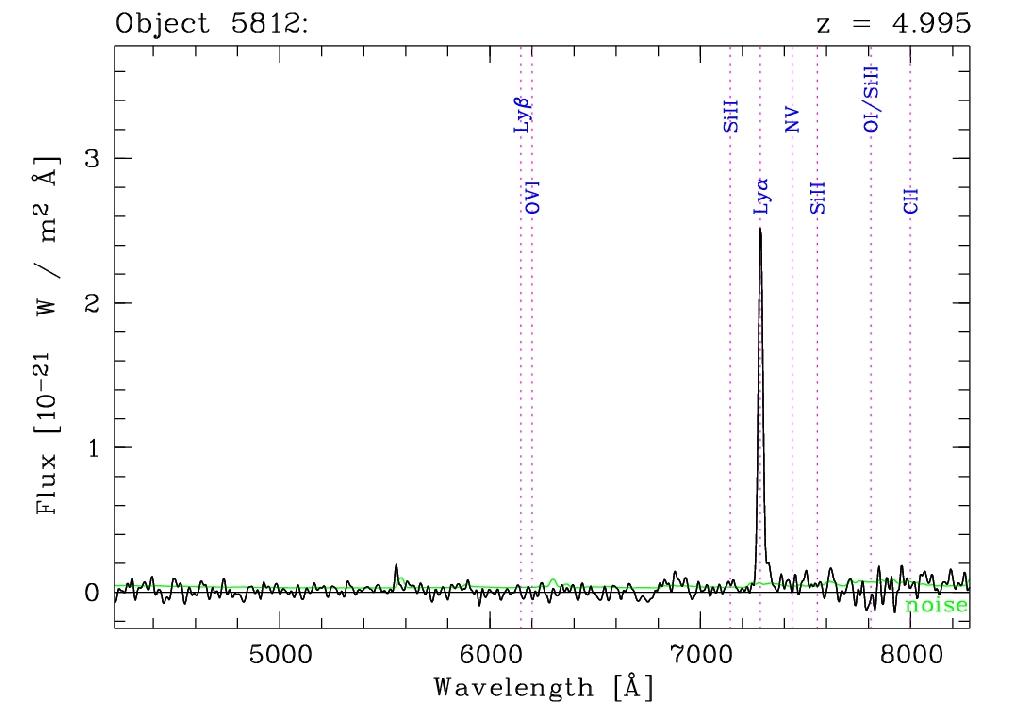
|
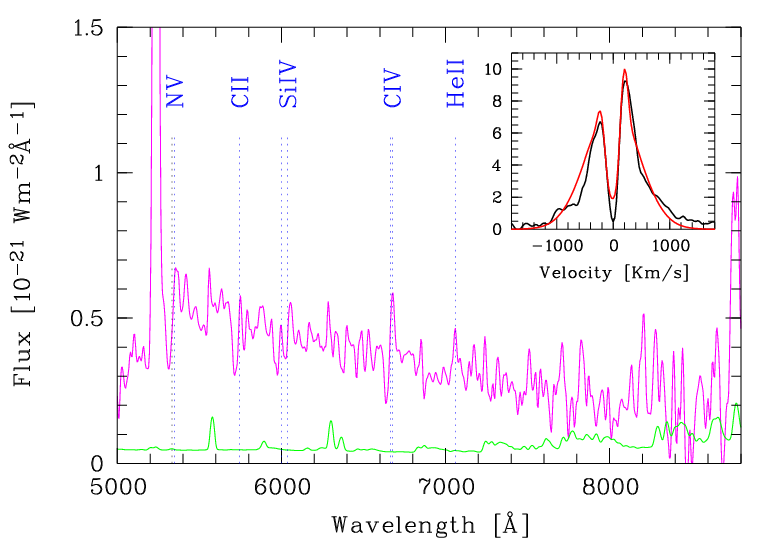
|
| Spectrum of the galaxy FDF-5903 at z = 2.774. This galaxy shows Lyα and plenty further interstellar lines in absorption. See Noll et al. 2004 | Spectrum of the Lyα galaxy FDF-5812 at z = 4.995. This is the galaxy with the highest confirmed redshift in the FDF so far. See Noll et al. 2004 | The spectrum of the Lyα galaxy FDF-4691. In the low-resolution spectrum (magenta) the strong Lyα line (observed at 5230 Å) is unresolved and truncated. The resolved line profile is presented in the inset (black line) together with a theoretical profile calculated from a model of the Lyα forming region of FDF-4691 (red line). See Tapken et al. 2004 |
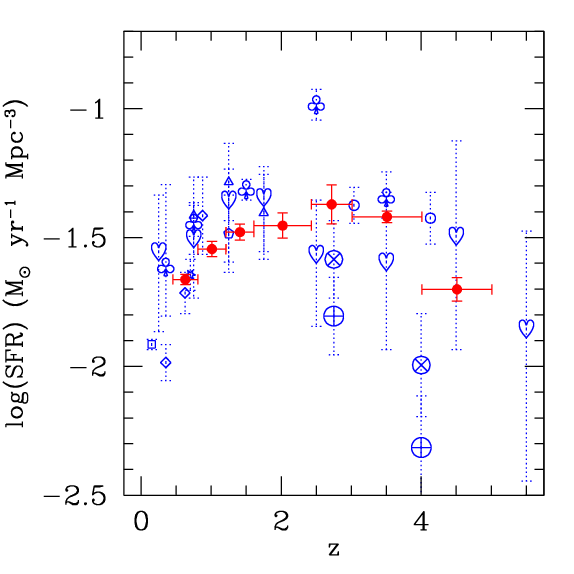
|
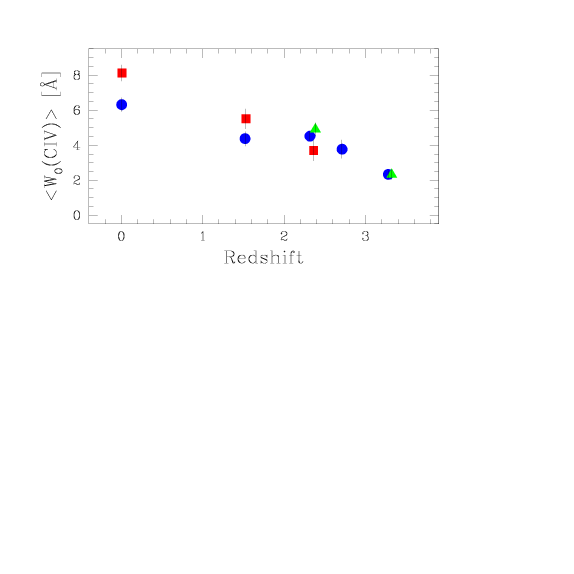
|
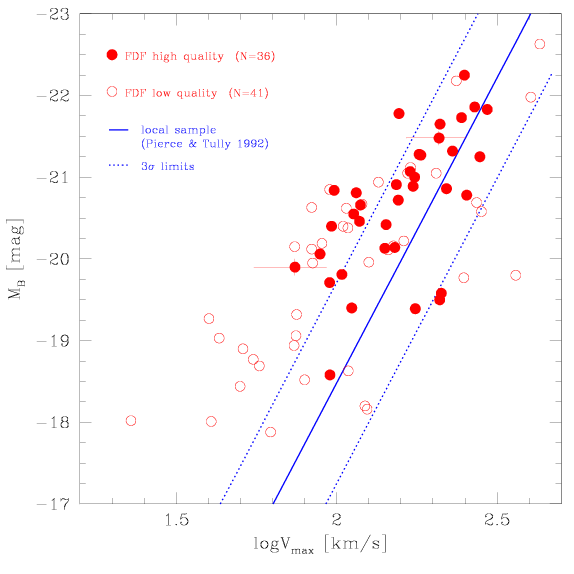
|
| The cosmic star formation rate as a function of redshift as derived from the FORS Deep Field (red symbols). For comparison, results of various earlier studes taken from the literature are included. The data have not been corrected for dust extinction. See Appenzeller et al. 2004 | Mean strength of the resonance doublet of the carbon ion C+++ in the spectra of FORS Deep Field starburst galaxies as a function of redshift. Since in starburst galaxies the strength of this blend is approximately proportional to the abundance of heavy elements, the diagram illustrates directly the chemical enrichment of the Universe with decreasing redshift (or increasing cosmic age). See Mehlert et al. 2002 | Blue absolute magnitude M_B as a function of maximum disk rotation velocity V_max for 77 FORS Deep Field spirals at redshifts 0.1 < z < 1.0 (red symbols), compared to the local Tully-Fisher relation (blue line). Slowly rotating, low-mass spirals are significantly brighter than their local counterparts, whereas distant and local high-mass systems have similar luminosities. See Böhm et al. 2004 |